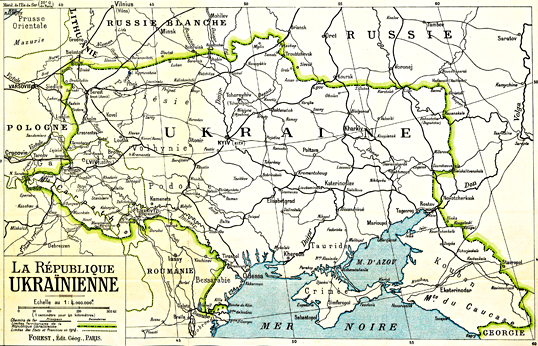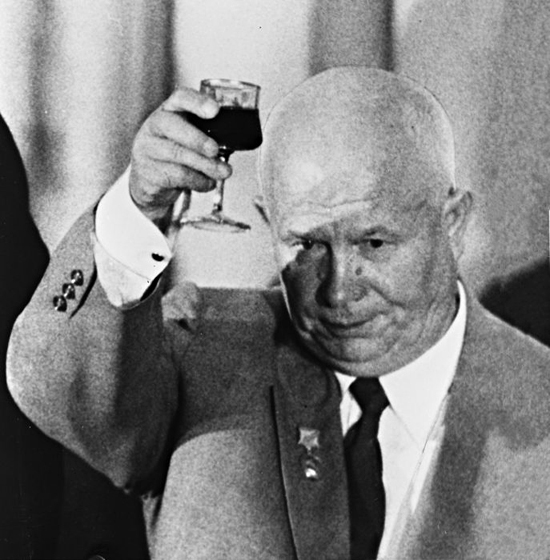At Wednesday’s debut of the impeachment hearings there was one issue upon which both sides of the aisle seemed to agree, and it was a comic-book caricature of reality.
House Intelligence Committee Chairman Adam Schiff led off the proceedings with this: “In 2014, Russia invaded a United States ally, Ukraine, to reverse that nation’s embrace of the West, and to fulfill Vladimir Putin’s desire to rebuild a Russian empire…”
Five years ago, when Ukraine first came into the news, those Americans who thought Ukraine was an island in the Pacific can perhaps be forgiven. That members of the House Intelligence Committee don’t know – or pretend not to know – more accurate information about Ukraine is a scandal, and a consequential one.
As Professor Stephen Cohen has warned, if the impeachment process does not deal in objective fact, already high tensions with Russia are likely to become even more dangerous.
So here is a kind of primer for those who might be interested in some Ukraine history:
- Late 1700s: Catherine the Great consolidated her rule; established Russia’s first and only warm-water naval base in Crimea.
- In 1919, after the Bolshevik Revolution, Moscow defeated resistance in Ukraine and the country becomes one of 15 Republics of the Union of Soviet Socialist Republics (USSR).
- In 1954, after Stalin’s death the year before, Nikita Khrushchev, a Ukrainian, assumed power. Pandering to Ukrainian supporters, he unilaterally decreed that henceforth Crimea would be part of the Ukrainian SSR, not the Russian SSR. Since all 15 Republics of the USSR were under tight rule from Moscow, the switch was a distinction without much of a difference – until later, when the USSR fell apart.
- Nov. 1989: Berlin wall down.
- Dec. 2-3, 1989: President George H. W. Bush invites Soviet leader Mikhail Gorbachev to summit talks in Malta; reassures him “the U.S. will not take advantage” of Soviet troubles in Eastern Europe. Bush had already been pushing the idea of a Europe whole and free, from Portugal to Vladivostok.
A Consequential Quid Pro Quo
- Feb. 7-10, 1990: Secretary of State James Baker negotiates a quid pro quo; Soviet acceptance of the bitter pill of a reunited Germany (inside NATO), in return for an oral US promise not to enlarge NATO “one inch more” to the East.
- Dec. 1991: the USSR falls apart. Suddenly it does matter that Khrushchev gave Crimea to the Ukrainian SSR; Moscow and Kyiv work out long-term arrangements for the Soviet navy to use the naval base at Sevastopol.
- The quid pro quo began to unravel in October 1996 during the last weeks of President Bill Clinton’s campaign when he said he would welcome Poland, Hungary and the Czech Republic into NATO – the earlier promise to Moscow notwithstanding. Former US Ambassador to the USSR Jack Matlock, who took part in both the Bush-Gorbachev early-December 1989 summit in Malta and the Baker-Gorbachev discussions in early February 1990, has said, “The language used was absolute, including no ‘taking advantage’ by the US… I don’t see how anybody could view the subsequent expansion of NATO as anything but ‘taking advantage,’ particularly since, by then, Russia was hardly a credible threat.” (From 16 members in 1990, NATO has grown to 29 member states – the additional 13 all lie east of Germany.)
- Feb. 1, 2008: Amid rumors of NATO planning to offer membership to Ukraine, Russian Foreign Minister Sergei Lavrov warns US Ambassador William Burns that “Nyet Means Nyet.” Russia will react strongly to any move to bring Ukraine or Georgia into NATO. Thanks to WikiLeaks, we have Burns’s original cable from embassy in Moscow.
- April 3, 2008: Included in Final Declaration from NATO summit in Bucharest: “NATO welcomes Ukraine’s and Georgia’s Euro-Atlantic aspirations for membership in NATO. We agreed today that these countries will become members of NATO.”
- Early September 2013: Putin helps Obama resist neocon demands to do “shock and awe” on Syria; Russians persuade President Bashar al-Assad to give up Syrian army chemical weapons for destruction on a US ship outfitted for chemical weapons destruction. Neocons are outraged over failing to mousetrap Obama into attacking Syria.

Meanwhile in Ukraine
- Dec. 2013: In a speech to the U.S.-Ukraine Foundation, Assistant Secretary of State for European Affairs Victoria Nuland says: “The United States has supported Ukraine’s European aspirations. … We have invested over $5 billion to assist Ukraine in these and other goals that will ensure a secure and prosperous and democratic Ukraine.”
- Feb. 4, 2014: Amid rioting on the Maidan in Kiev, YouTube carries Assistant Secretary of State Victoria Nuland’s last minute instructions to US Ambassador to Ukraine Geoffrey Pyatt regarding the US pick for new Ukrainian prime minister, Arseniy Yatsenyuk (aka “Yats”) and other plans for the imminent coup d’etat in Kiev. (See: ) When Pyatt expresses concern about EU misgivings about mounting a coup, Nuland says “Fuck the EU.” She then apologizes to the EU a day or two later – for the profanity, not for the coup. She also says that Vice President Joe Biden will help “glue this thing together”, meaning the coup.
- Feb. 22, 2014: Coup d’etat in Kyiv; appropriately labeled “the most blatant coup in history” by George Friedman, then President of the widely respected think-tank STRATFOR.
- Feb. 23, 2014: The date that NATO, Western diplomats, and the corporate media have chosen – disingenuously – as the beginning of recent European history, with silence about the coup orchestrated in Kyiv the day before. President Vladimir Putin returns to Moscow from the winter Olympics in Sochi; confers with advisers about Crimea, deciding – unlike Khrushchev in 1954 – to arrange a plebiscite to let the people of Crimea, most of whom strongly opposed the coup regime, decide their own future.
- March 16, 2014: The official result from the voters in Crimea voted overwhelmingly for independence from Ukraine and to join Russia. Following the referendum, Crimea declared independence from Ukraine and asked to join the Russian Federation. On March 18, the Russian Federal Assembly ratified the incorporation of Crimea into Russia.
- In the following days, Putin made it immediately (and publicly) clear that Yatsenyuk’s early statement about Ukraine joining NATO and – even more important – the US/NATO plans to deploy ABM systems around Russia’s western periphery and in the Black Sea, were the prime motivating forces behind the post-referendum re-incorporation of Crimea into Russia.
- No one with rudimentary knowledge of Russian history should have been surprised that Moscow would take no chances of letting NATO grab Crimea and Russia’s only warm-water naval base. The Nuland neocons seized on the opportunity to accuse Russia of aggression and told obedient European governments to follow suit. Washington could not persuade its European allies to impose stringent sanctions on Russia, though, until the downing of Malaysian Airlines MH17 over Ukraine.
Airplane Downed; 298 Killed
- July 17, 2014: MH17 shot down
- July 20, 2014: Secretary of State John Kerry told NBC’s David Gregory, “We picked up the imagery of this launch. We know the trajectory. We know where it came from. We know the timing. And it was exactly at the time that this aircraft disappeared from the radar.” The US, however, has not shared any evidence of this.
- Given the way US intelligence collectors had been focused, laser-like, on that part of the Ukrainian-Russian border at that time, it is a near certainty that the US has highly relevant intelligence regarding what actually happened and who was most likely responsible. If that intelligence supported the accusations made by Kerry, it would almost certainly have been publicized.
- Less than two weeks after the shoot-down, the Europeans were persuaded to impose sanctions that hurt their own businesses and economies about as much as they hurt Russia’s – and far more than they hurt the US There is no sign that, in succumbing to US pressure, the Europeans mustered the courage to ask for a peek at the “intelligence” Kerry bragged about on NBC TV.
- Oct. 27, 2016: Putin speaks at the Valdai International Discussion Club.
How did the “growing trust” that Russian President Putin wrote about in his September 11, 2013 New York Times op-ed evaporate?
How did what Putin called his close “working and personal relationship with President Obama” change into today’s deep distrust and saber-rattling? A short three years later after the close collaboration to resolve the Syrian problem peacefully, Putin spoke of the “feverish” state of international relations and lamented: “My personal agreements with the President of the United States have not produced results.” And things have gone downhill from there.
Ray McGovern works with Tell the Word, a publishing arm of the ecumenical Church of the Saviour in inner-city Washington. His 27-year career as a CIA analyst includes serving as Chief of the Soviet Foreign Policy Branch and preparer/briefer of the President’s Daily Brief. He is co-founder of Veteran Intelligence Professionals for Sanity (VIPS). This originally appeared at Consortium News.



